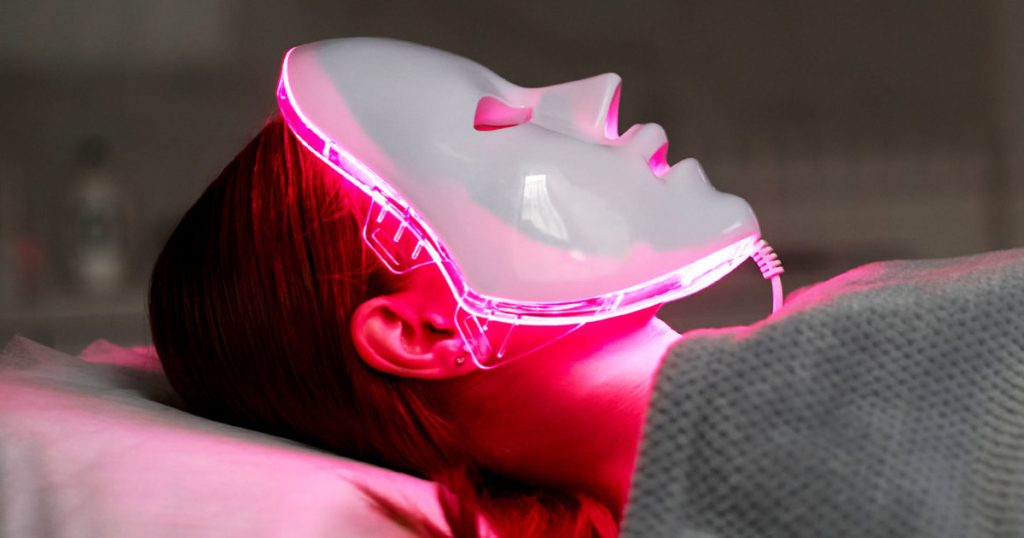Red light therapy has become a popular trend on social media, with many praising it for its numerous health benefits, including improving acne, wrinkles, hair growth, and muscle recovery. The therapy involves exposing the skin to low levels of red or near-infrared light energy, which is absorbed by cells to stimulate various processes within the body. The technology, originally legitimized through NASA experiments in the 1980s, has evolved over time and now typically uses LEDs and lasers to treat medical conditions.
Red light therapy is administered through various devices such as beds, panels, lamps, face masks, handheld wands, and helmets, which can target specific areas or the entire body. Unlike UV light therapy, which uses higher energy wavelengths and can cause DNA damage, red light therapy is considered safe and does not use UV rays. The therapy is believed to work on a cellular level to enhance cell growth, reduce inflammation, regenerate tissue, boost collagen and elastin production, and promote hair regrowth.
Many claims have been made about the uses and benefits of red light therapy, including its ability to treat skin conditions such as acne, wrinkles, scars, and sun damage, as well as promote wound healing and hair regrowth. The therapy may also have benefits for exercise, reducing inflammation, relieving pain, and aiding in muscle recovery. While the research on red light therapy is promising, it is still emerging, and more studies are needed to fully understand its effects and compare it to standard treatments.
Potential risks and side effects of red light therapy include tissue damage, eye damage, adverse skin reactions, interactions with medications, inconsistent results, and wasted money. Certain groups, such as pregnant individuals, children, cancer patients, people with conditions causing photosensitivity, those on medications that cause photosensitivity, people with epilepsy, and those with thyroid disorders should avoid red light therapy or consult with a healthcare provider before use. People with darker skin tones may also be at higher risk of hyper- or hypopigmentation.
To try red light therapy safely, it is recommended to discuss it with a dermatologist and consider in-office treatments, which are often more effective and safe. If using a device at home, follow the instructions carefully, start with a few minutes per session, and gradually increase frequency up to three times a week. If experiencing any pain, discomfort, or side effects, discontinue use of the device. Red light therapy is a promising treatment for various conditions, but it is important to do thorough research, consult with a healthcare provider, and consider other treatment options as well.


